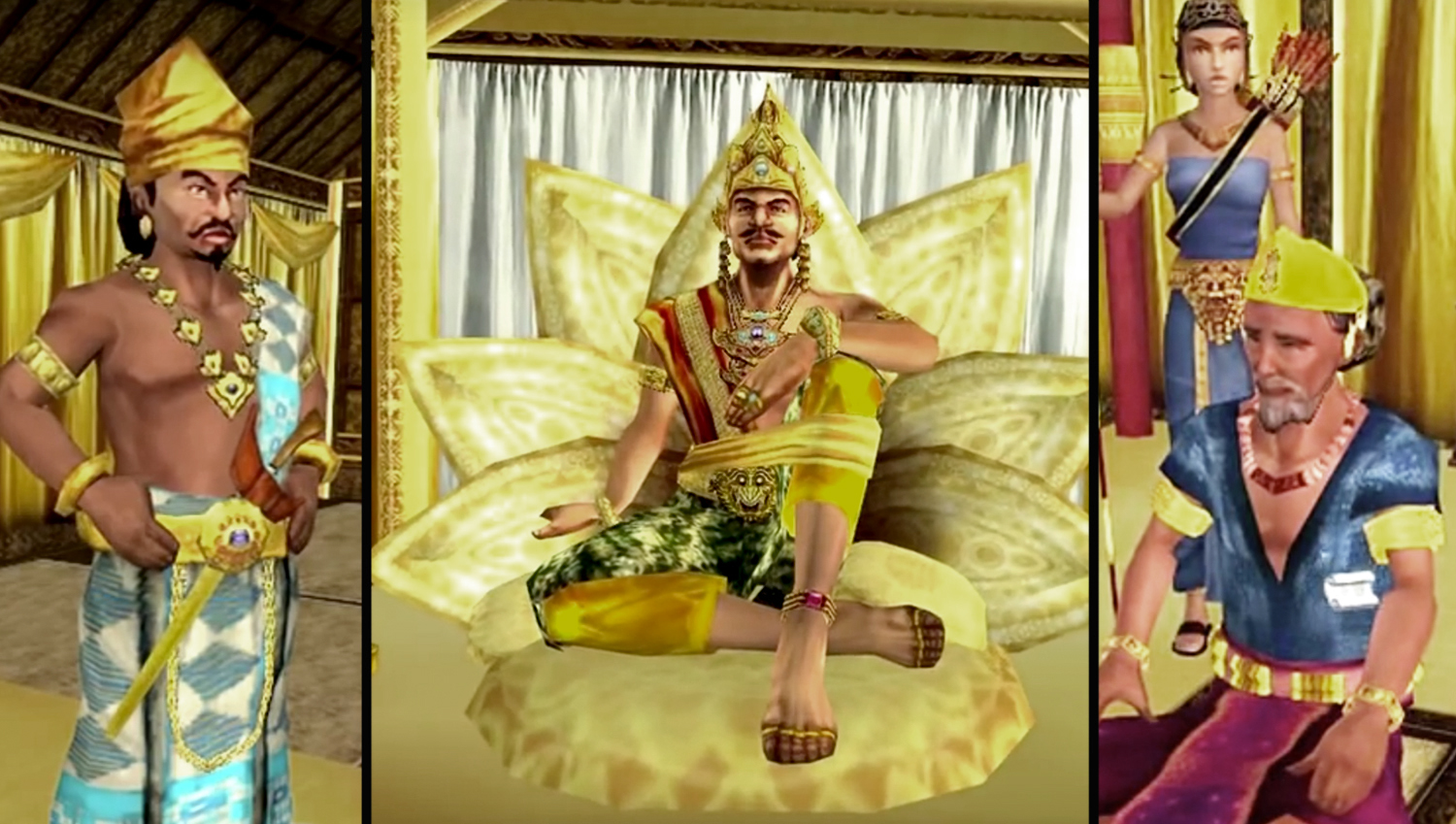Sitting in the middle of Southeast Asia, the island of Singapore has its roots in Malay myths and legends, evolving from vassal state to independent kingdom through the centuries.
From archeological findings and Malay literary works (such as the Malay Annals), we are afforded a glimpse into the inner workings of the royal courts, where political intrigue and desire for power led to the rise and fall of kingdoms across the Malay world.
 Screengrab of YouTube video featuring the online game World of Temasek. This is a reproduction of a 14th century Malay Palace in Singapura.
Screengrab of YouTube video featuring the online game World of Temasek. This is a reproduction of a 14th century Malay Palace in Singapura.
We take a look at six faces in the Malay royal court, as told by historical facts and cultural myths:
1. Raja/Sultan
 Screengrab from YouTube video featuring the online game World of Temasek
Screengrab from YouTube video featuring the online game World of Temasek
The highest position in the Malay royal court was reserved for the King.
Perhaps the most famous sultan in our little red dot's conscience is Hussein Shah, the rightful heir to the throne of the Johor-Riau empire who was robbed of his place by his younger brother.
Hussein Shah later became recognised by the British as the Sultan of Singapore, in exchange for letting them set up a port on the island.
Threading into murkier waters of myths and legends, the Sejarah Melayu (Malay Annals), a collection of 16th century Malay literary works, outline Singapura's succession of five sultans - Sri Tri Buana (possibly Sang Nila Utama), Paduka Sri Pikrama Wira, Sri Rana Wikerma, Padika Sri Maharaja, and Sri Sultan Iskandar Syah (possibly also known as Parameswara who went on to found Malacca).
2. Bendahara (Prime Minister)
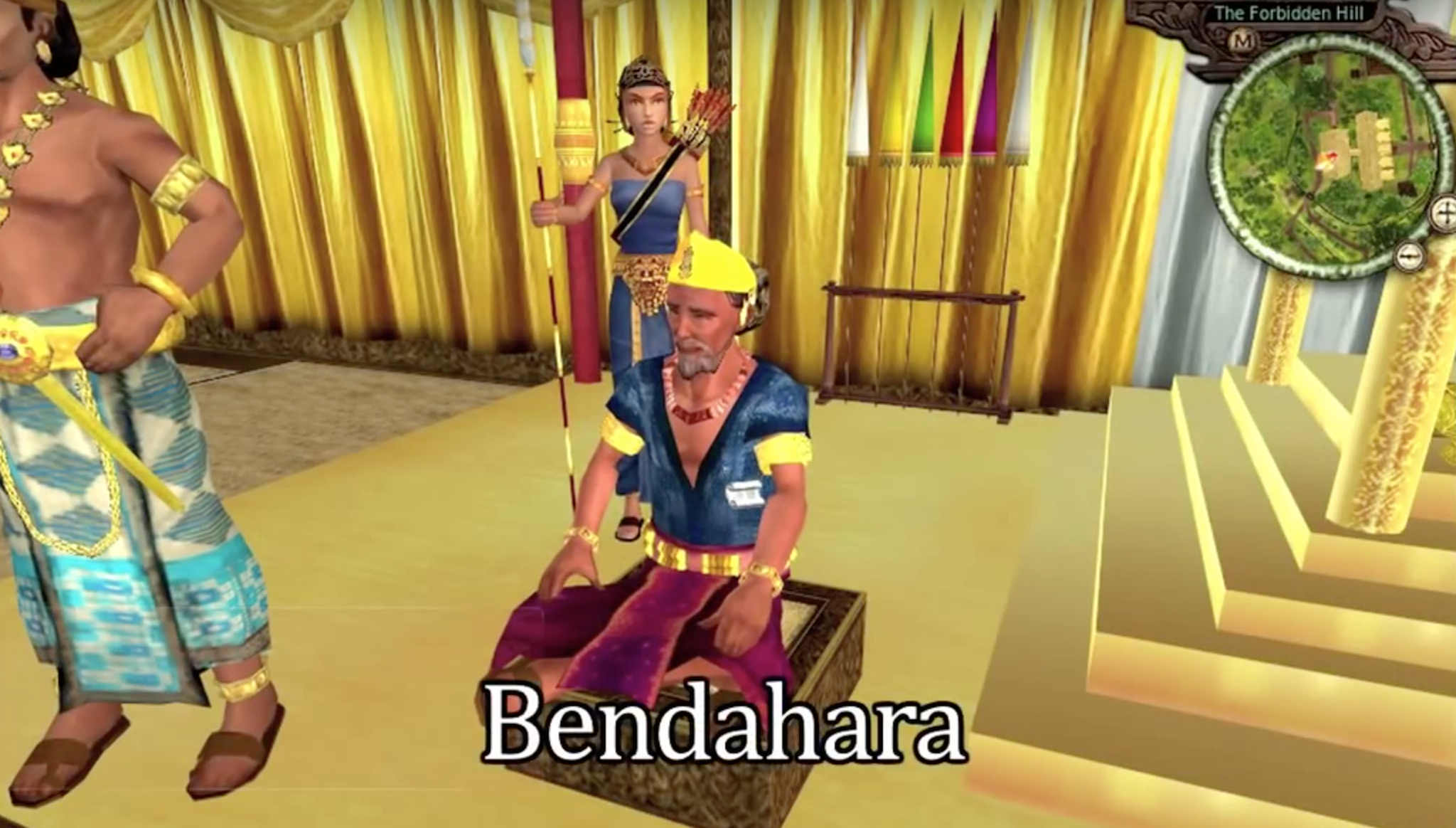 Screengrab from YouTube video featuring the online game World of Temasek
Screengrab from YouTube video featuring the online game World of Temasek
The second-in-command who oversaw the rest of the king's subjects . Being the king's right-hand man also gave the Bendahara the duty of taking over the king's duties when the latter wasn't available.
According to the Malay Annals, Tun Parpatih Parmuka Barjaja was the Bendahara who served during the reign of Paduka Sri Pikrama Wira, the second king of Singapura. He was the first Bendahara in the kingdom.
3. Penghulu Bendahari (State Treasurer)
Aside from managing the financial matters of the state (such as taxes and tributary gifts), the Penghulu Bendahari handled the affairs of the palace and was placed in charge of managing the Port Administrators (Shahbandar).
Perhaps the most famous Bendahari from the stories of Singapura is Sang Ranjuna Tapa - the treasurer whose daughter was humiliated by Raja Secander Shah (Iskandar Syah).
 Adapted via.
Adapted via.
At that time, the king was enamoured with the beauty of the treasurer's daughter. Jealous that the girl received so much attention from the king, the king's concubines plotted together and accused the girl of infidelity. Enraged, the king ordered the girl to be impaled in the middle of a busy market.
Sang Ranjuna Tapa avenged his daughter by opening the gates of the fortified Singapura to the Javanese during a battle, allowing the enemies to storm the city and raze the kingdom of Singapura to the ground.
4. Temenggung (Head of Police)
The Head of Police oversaw the safety and security of the state. Additionally, he was also given the duty of presiding over issues that happen on land.
If you paid attention in history classes, the name Abdul Rahman would ring a bell - he was the Temenggung who helped the British wrest control of Singapore from the Dutch.
Subsequently, Sultan Hussein Shah and Temenggung Abdul Rahman signed away control of the island to the British via the 1824 Treaty of Friendship and Alliance.
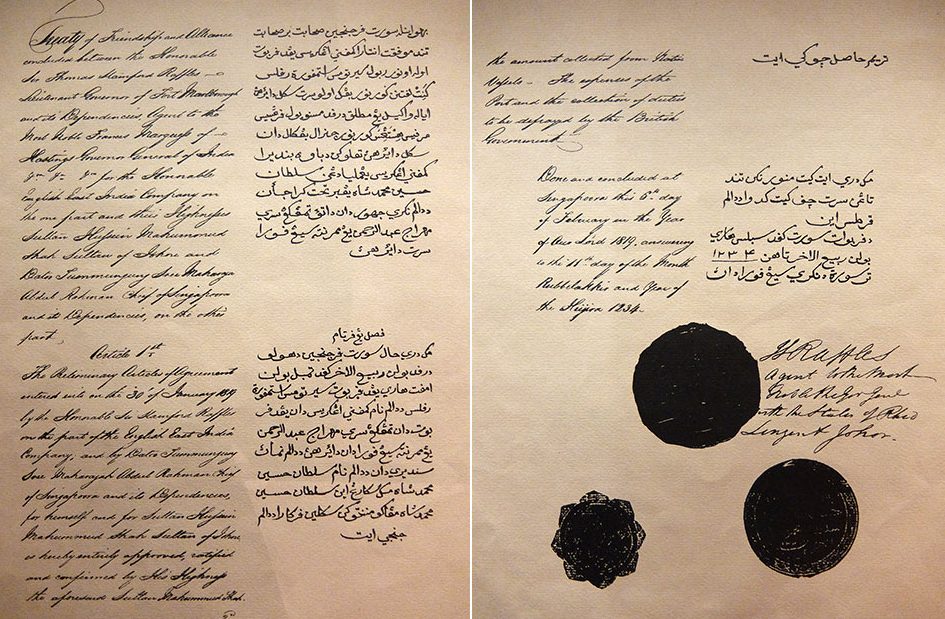 Reproduction of the 1824 Treaty of Friendship and Alliance. You can see three seals on it, belonging to Stamford Raffles, Sultan Hussein Shah and Temenggung Abdul Rahman.
Reproduction of the 1824 Treaty of Friendship and Alliance. You can see three seals on it, belonging to Stamford Raffles, Sultan Hussein Shah and Temenggung Abdul Rahman.
5. Laksamana (Admiral)
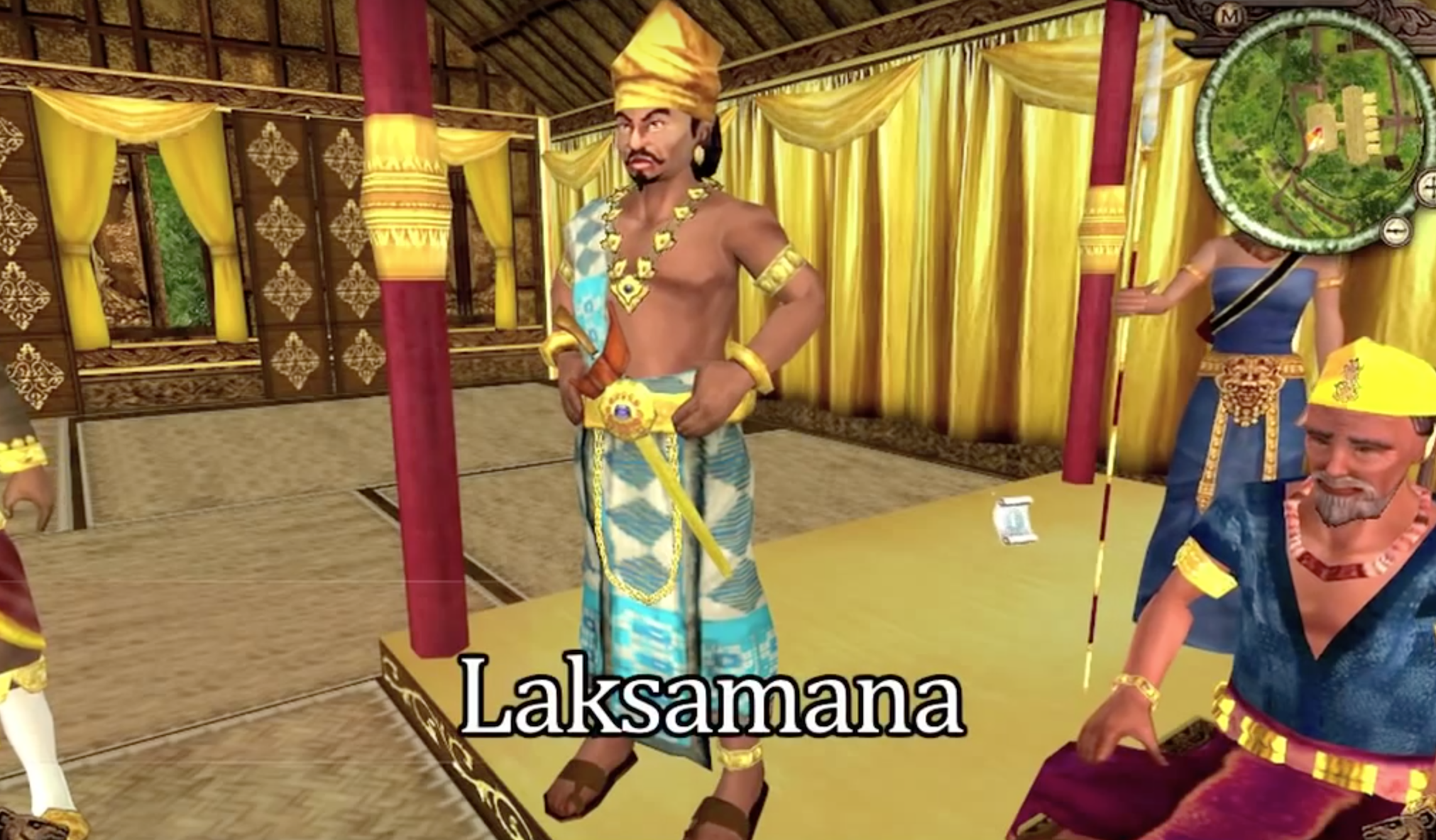 Screengrab from YouTube video featuring the online game World of Temasek
Screengrab from YouTube video featuring the online game World of Temasek
The Admiral in the Navy, who ensured that maritime laws were kept. The most famous Laksamana in regional culture was the warrior Hang Tuah who served during the reign of Sultan Mansur Shah, the sixth king of Malacca.
The Malay Annals tell of how Hang Tuah defeated his equal, the warrior Hang Casturi who wrecked havoc in Sultan Mansur Shah's palace, and hence was accorded the rank of Laksamana in Mansur Shah's administration.
6. Shahbandar (Port Administrator)
The term shahbandar is Persian for 'Harbour Master'. According to HistorySG, the Shahbandar was usually a trusted foreigner tasked with supervising trade at ports, collecting custom duties, and generally ensuring smooth trade at the port.
Portuguese writer Manuel Godinho de Erédia drew a map which described early 17th century Singapura. This map indicated an area near the Singapore river labelled 'xabandaria' (the Shahbandar's compound), proving that a harbour master once resided there.
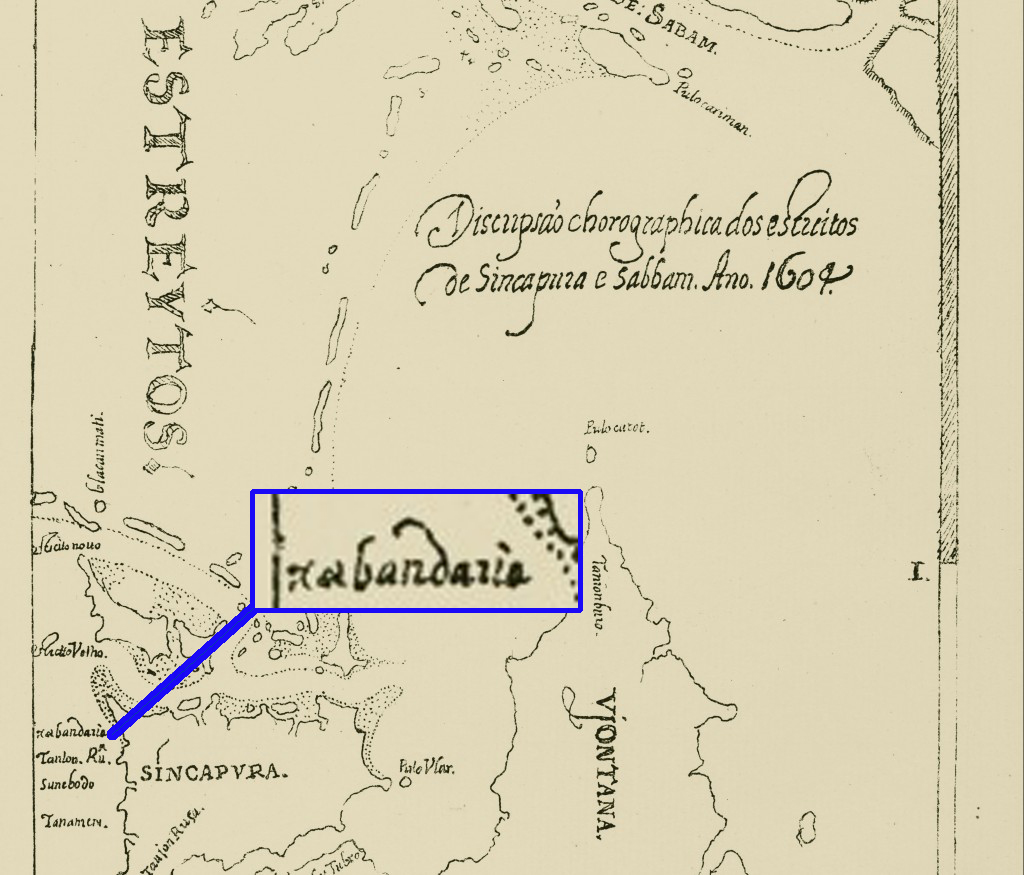 Image adapted via.
Image adapted via.
Top photo adapted via YouTube video of online game World of Temasek by Magma Studios.
If you like what you read, follow us on Facebook and Twitter to get the latest updates.
If you like what you read, follow us on Facebook, Instagram, Twitter and Telegram to get the latest updates.
